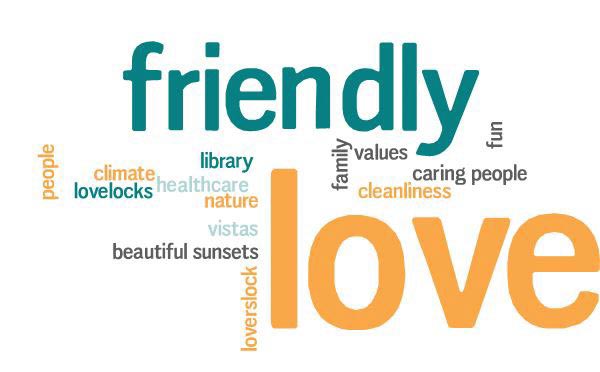Survey Results
Following the in person community asset mapping workshop on Nov. 4, 2019, an online community asset survey was open in Survey Monkey from Nov. 10, 2019, to Nov. 18, 2019. Links to the survey were made available on the NEAP website and encouraged to be shared for broader distribution with workshop attendees.
No residents responded to the Humboldt County online community asset survey. The survey was available for one week and accessible on the NEAP webpage, and paper copies were also made available through Humboldt County offices. Due to a lack of interest in completeing and marketing the survey, the survey was closed and themes to reflect a snapshot of assets are based soley on the asset maps completed by workshop participants.
Respondents were asked on the survey to share, “In one word, what is something you would like to brag about your community?” The following word cloud (Figure 1) reflects respondents’ one word to brag about their community. The larger the word in the word cloud, the more often the word was used from residents on the survey. Therefore, the more frequently it was cited, the larger the word appears.
The process used to identify assets was grouped into six categories. These six categories were provided to residents during the community workshop and in the online survey as a framework to think about assets. The six asset categories are based on the seven community capitals (Flora and Flora 2013). The seven community capitals (i.e., built, natural, political, social, natural, human and cultural) are commonly identified as the ecosystem of a healthy community. The community capitals approach builds on the notion that all communities have assets. These assets may be inactive, or they may be invested to create more assets or leveraged to help fill gaps in the community.
 Figure 1. Humboldt County Community Asset Word Cloud, 2021
Figure 1. Humboldt County Community Asset Word Cloud, 2021
Respondents were asked to provide what assets exist currently and what assets they desire for each of the six categories. The six asset categories can be fluid, implying the categories themselves are not the focus, but rather it is the the identification of the asset itself that is most important. For example, residents may identify a desired asset to have “reliable broadband”. This asset can be identified under the category of Play, Economic or Values. The six categories of assets are identified as follows.
- Values
- People
- Places
- Play
- Economic
- Group
For the complete special report with assets, graphics and tables of data, use the link below to download the PDF version.
M. Rebori, J. Lednicky
2022,
Results from the Community Asset Survey: Humboldt County, Nevada,
Extension, University of Nevada, Reno, SP-21-09


